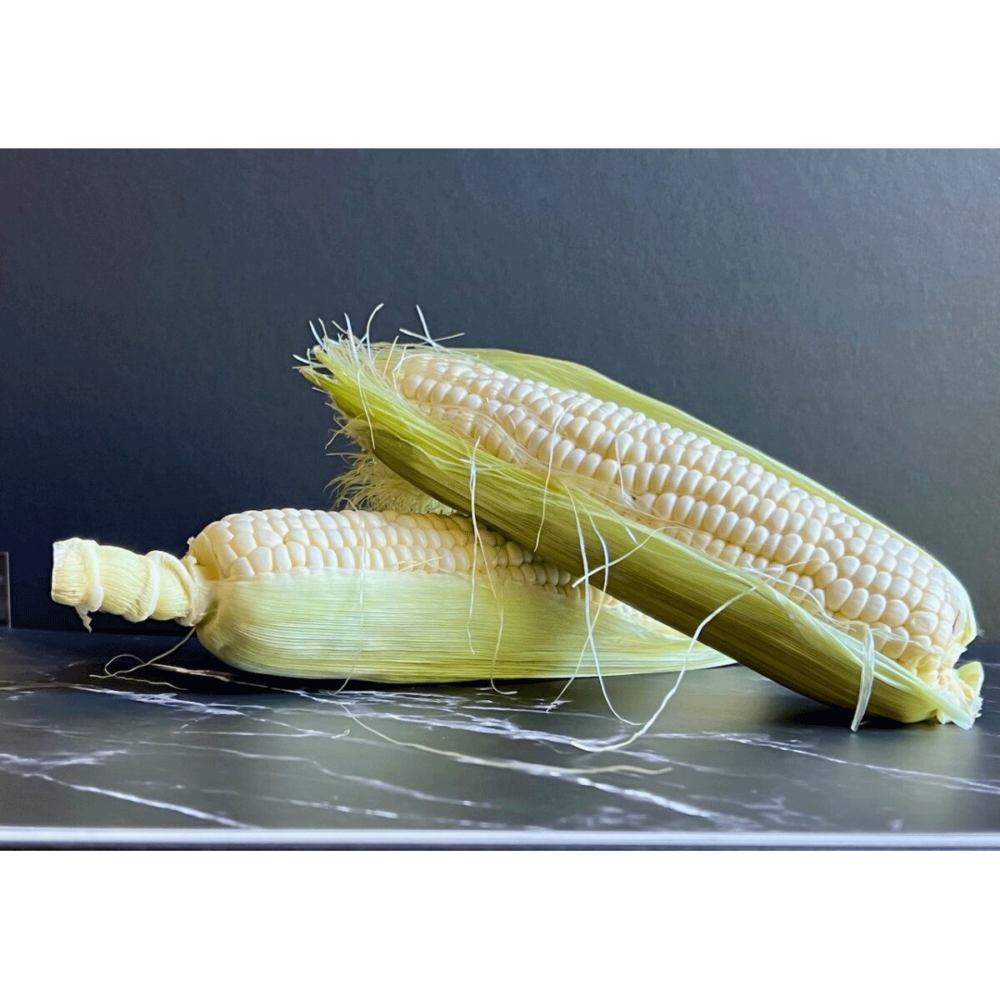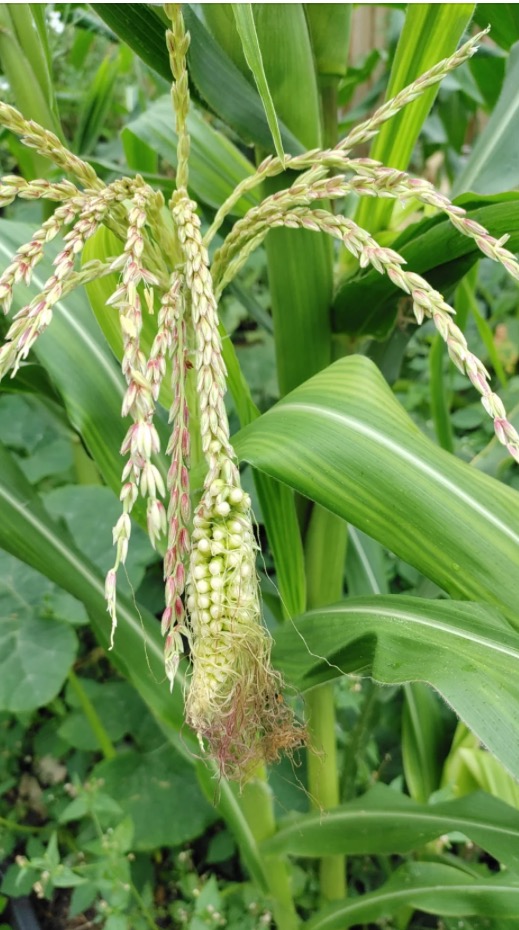
When Spring and Summer arrive it’s time to enjoy sweet, juicy corn. You can simply simmer the ears and eat directly off the cob. I prefer a bit of sea salt and my husband loves butter, salt and pepper. But aside from this simple, straight forward presentation there are so many things you can do with corn. The recipes that are listed in this newsletter give you soups, corn cakes and succotash. All three recipes have variations and suggested creative twists to expand your “corn” repertoire.
But, where did corn start? The road to what we find today at our Farmer’s Market or grocery store started 10,000 years ago in what is now Central Mexico. Through trial and error, as well as our farming ancestors expanding their knowledge, we now have many varieties of corn. From sweet corn in several colors, to corn ground for polenta and cornmeal, feed for livestock and fuel for our automobiles one can understand that the world grows 1.2 billion tons a year. The majority grown in the United States with China coming in second. Here are a few bits about corn that may be of interest to you and I hope you enjoy the history as well as the recipes.
The Beginnings
Corn has been around for a very long time. Like wheat and rice people started using it as a food source as long as 10,000 years ago. However, unlike wheat or rice, corn has not been directly traced back to its wild relatives. There is no wild plant that looks like corn as there was with wheat, rice or even sugarcane. Through modern genetics scientist have found that the closest they can trace is back to a wild grass called Teosinti. It doesn’t look much like modern day corn, but at the DNA level they are quite alike. Research at places like UC Davis in California and the University of Utah show this connection. They state that early agriculture took the small pods from the teosinti grass to use as seed. They theorize that at first ancients chewed the stalk for the sweet juices and kept the seeds for replanting. As time passed the ancient farmers learned to keep the best seeds and those in time produced the large kernels that they could use as a food source, not just seeds. The studies also show that about 5000 years ago farmers developed a hybrid that eventually developed into our modern day corn.

Nutrition
Corn is a great fiber choice. It is mainly insoluble fiber that makes it a low glycemic food that does not cause unhealthy spikes in blood sugar. It has B vitamins, zinc, magnesium, copper, iron and manganese. When combined with legumes like dried peas, lentils or beans, or orange winter squash it brings together all the amino acids needed to form a complete protein. In some countries corn is the major food source even outpacing wheat and rice. Cornmeal is a great baking ingredient as it is cholesterol-free, gluten-free, is higher than other fresh corn in carbohydrates and is a good source of vitamin B6 and folate. For those of us who love polenta, it really isn’t very different from cornmeal, mainly just coarsely ground.